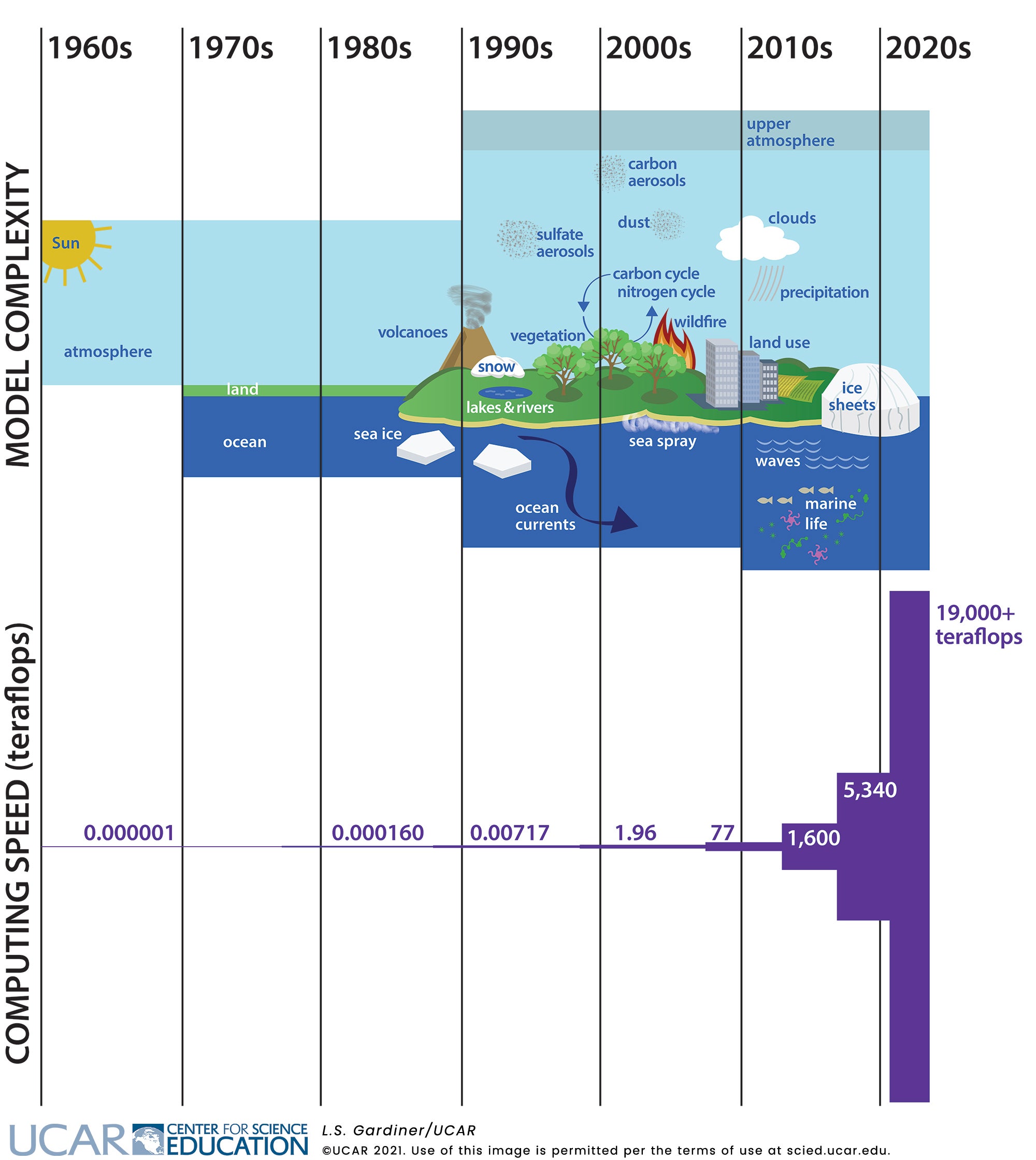Fast Computers and Complex Climate Models
Meteorologists have used weather prediction models daily since the 1960s. Without such models, our society would suffer countless billions of dollars in weather-related losses. Not long after weather prediction models came on the scene, scientists recognized that similar techniques could be used to simulate climate as well. Today's climate models incorporate physical, chemical, and biological processes that involve the atmosphere, land, oceans, sea ice, and glaciers—the entire Earth system.
Scientists cannot carry out controlled laboratory experiments on the only planet we have. But by using climate models, they can conduct useful “experiments,” such as altering the amount of greenhouse gas to see how the atmosphere would be affected over time.
As computers have become faster over time, models of our planet and its atmosphere have become more complex.

One teraflop is equal to a trillion calculations carried out in just one second (“flop” means “floating-point operation”).